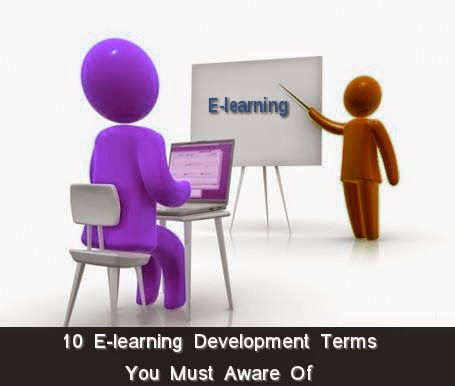10 E-learning Development Terms You Must Aware Of
There are many eLearning
Application Development terms used while development task like any
other activity. eLearning developers have to be familiar with some of
those terms to create an exceptional online course. Would you like to
know what those terms are? Read this post
Content Analysis:
One of the fundamental
components of eLearning, content includes pedagogy and learning
objects, which is smaller units of learning. While designing
eLearning course, you have to first analyze the learning content and
recognize categories under which Facts, Concepts, Principles,
Process, and Procedure are falls.
Detailed Content
Outline:
Detailed Content Outline
is a document that has the description of the screen-level treatment
of the course. It is one type of rough draft for the storyboard.
SMEs:
SMEs stand for ‘Subject
Matter Experts’. They are professionals in some subject or on a
topic. These experts help to develop training material and
authenticating its correctness.
Style Guide:
A set of standards or
principles that used to write and design a document is known as Style
Guide. It includes various types and size of fonts, set of colors and
so on.
Learning Agent
Learning agent is a
cartoon character that addresses the learner and gives guidance
throughout the course.
Bloom’s Taxonomy:
Bloom’s Taxonomy is one
type of classification of learning objectives given by Benjamin
Bloom. The three domains of learning, i.e. Cognitive Domain,
Affective Domain, and Psychomotor Domain are identified by him. If
you want to make eLearning course more effective, then it is
advisable to create learning objectives and assessments at the
appropriate Bloom’s level.
Rapid eLearning
Rapid Development refers
to eLearning development methodology, which utilizes rapid authoring
tools for developing digital courses. Using such tools need minimal
programming knowledge and thus, course development will be minimized
by many folds.
Gamification
The usage of gaming
elements in a non-gaming context is known as Gamification. It goes
long ways to get skills and knowledge in a stress-free manner
stimulating the learning environment.
Content Chunking:
Content Chunking means to
make small parts of content for easy understanding. It helps learner
to understand the content easily. Here is an example of the content:
Prototype
Prototype is one type of
sample that provides deep idea about looks of the course before it is
fully created. If you want to make any changes then it can be made at
initial stage that saves lots of time and rework as well.
These are some terms that
help you to develop eLearning mobile application to provide knowledge
to your employees. If you want to know more about eLearning Application Development service or want to hire eLearning developers
for your project then click here.
10 E-learning Development Terms You Must Aware Of
 Reviewed by Unknown
on
10:13 PM
Rating:
Reviewed by Unknown
on
10:13 PM
Rating:
 Reviewed by Unknown
on
10:13 PM
Rating:
Reviewed by Unknown
on
10:13 PM
Rating:




















No comments:
Post a Comment